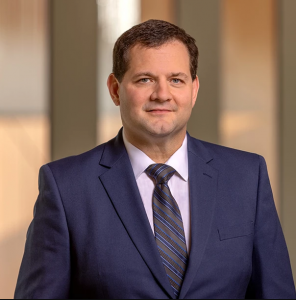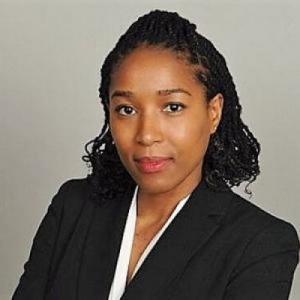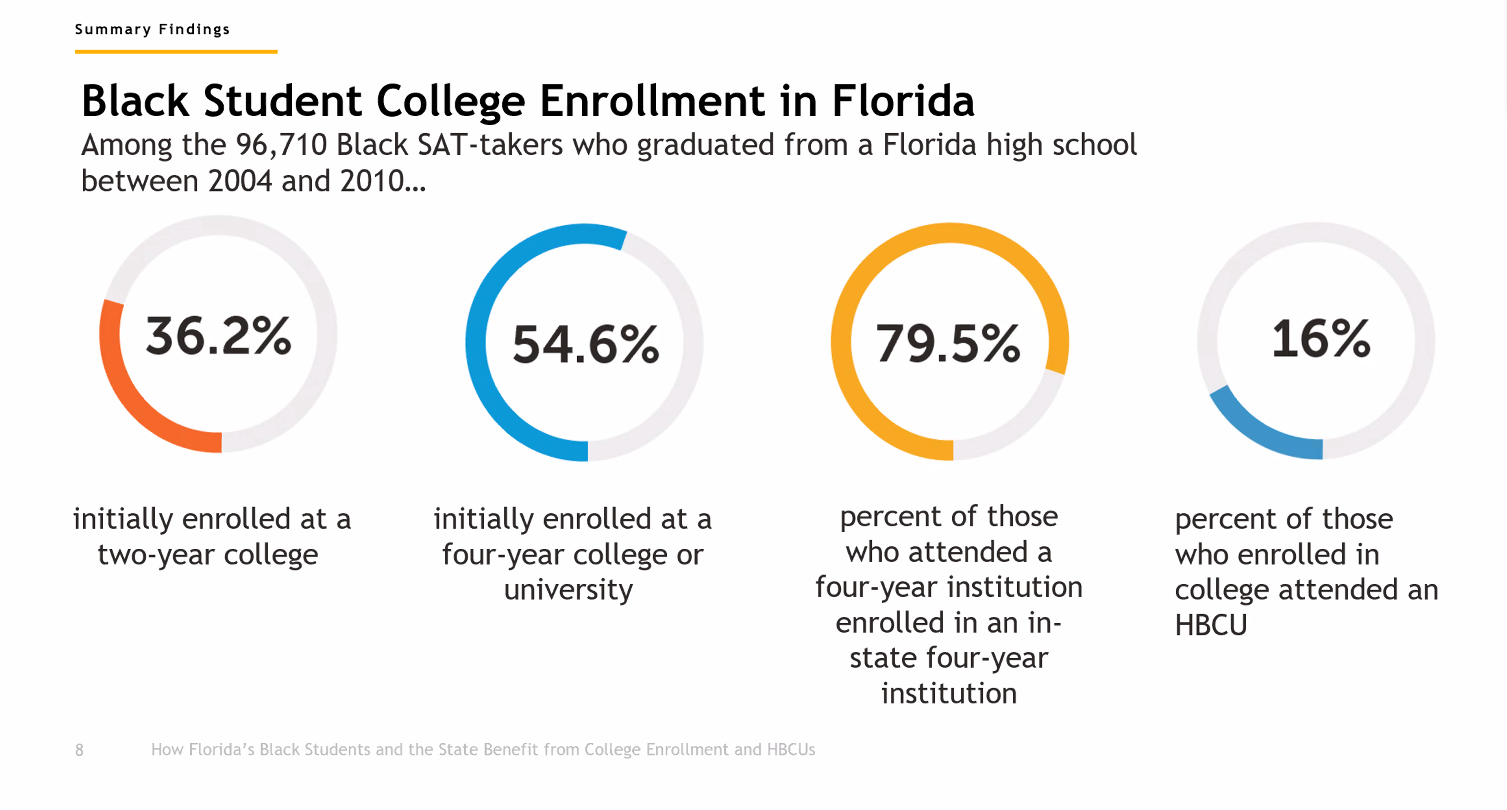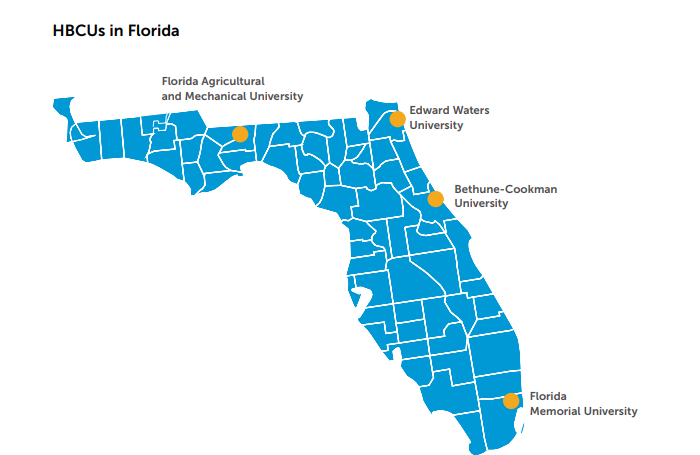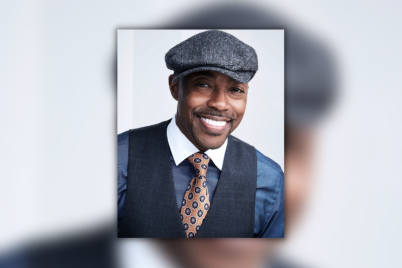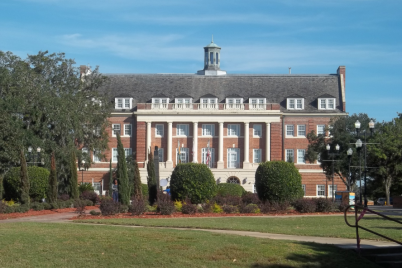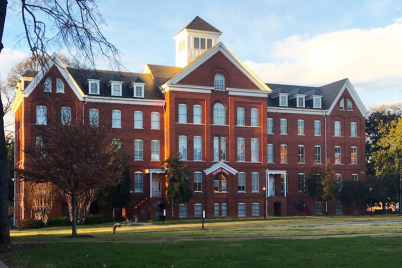The probability of Black students earning a bachelor’s degree when enrolled at an HBCU is 13.5 percentage points higher than if they attended a non-HBCU institution.
BY FRANK DROUZAS | Staff Writer
STATEWIDE — The Helios Education Foundation presented a virtual press conference to unveil a two-part study that revealed the significant value of Black students in Florida obtaining a college degree. Their findings, conducted in partnership with the Institute of Higher Education at the University of Florida, also underscored the specific benefits some Black students experience when attending Historically Black Colleges and Universities (HBCUs) and the benefits to the state of Florida overall.
Paul J. Luna, president and CEO of Helios, said the Foundation has an impact strategy that is driven by critical drivers that are “essential in getting students on track for post-secondary success and college attainment.” The drivers ensure that students are reading at grade level by the end of third grade, increasing the college-going rate of high school graduates and increasing degree completion, “ultimately post-secondary attainment, and particular two- and four-year college degrees.”
“In addition to grant-making, we bring a public policy and advocacy voice; we bring a communications perspective to share our learnings,” he said, “but we also are really grounded in research and data.”
Dr. Paul Perrault, senior vice president of Community Impact and Learning at Helios, said according to data, Black students struggle the most in Florida when it comes to post-secondary attainment, especially for those from low-income families.
“When we think about closing opportunity gaps and how we can improve educational opportunities, that’s why we’re focusing on Black students today,” he said, “and that’s why we wanted to understand this.”
The Foundation’s findings show that Black Florida students who attended a four-year college or university between 2004 and 2010 will experience a net present value (or total value) of $130,000 after 35 years from initial enrollment. These students will see a positive overall financial benefit from higher education.
The research also indicates that their average estimated household earnings are projected to be $8,583 higher than those Black Florida students who did not enroll in college. Additionally, the research shows that when a Black Florida student enrolls in a four-year college or university, it increases the likelihood that they will surpass the 50th percentile of earners in the state.
The study focused on four key research questions:
- How does enrolling in a community college or four-year institution initially impact Florida’s Black high school students’ post-secondary, economic and financial success?
- How is the state impacted by its Black high school graduates initially enrolling in a community college or four-year institution?
- How does enrolling in an HBCU initially impact Florida’s Black high school students’ post-secondary, economic and financial success?
- How is the state impacted by its Black high school students initially enrolling in an HBCU?
Andria Smythe, assistant professor at Howard University, said that data included not only SAT scores but vital information, including demographics, household income, and parental information. State college enrollment among Black students, especially at HBCUs, should be a priority for Florida; she said the data shows that individual-level benefits add up to significant returns to the state.
The study used one of the most extensive student-level datasets in the country to follow Black students throughout Florida from high school to college, even tracking their financial outcomes in 2017. Of the 96,710 Black students who took the SAT between 2004 and 2010, approximately 35 percent of the Black SAT-takers sent an application to at least one HBCU in the U.S., and about 40 percent of those students initially enrolled at an HBCU, according to the study.
Smythe noted that in terms of general college enrollment, there’s a 31.4 percent increase in the likelihood of earning a degree and living in Florida around age 30 when students initially enrolled in a two-year college. This increase is even greater for four-year colleges, at 36.6 percent. Concerning HBCU enrollment, there is a 15 percent increase in the likelihood of earning a degree and living in Florida around age 30 and a 40 percent increase in the likelihood of earning a bachelor’s degree nationally.
“A big part of why the number for earning a degree and living in Florida is lower is because a lot of students who are attracted to HBCUs have to go out of state to access more options when it comes to HBCUs,” she pointed out.
Students graduating and living in Florida at age 30 is essential, Perrault said, because you have people who have higher paying jobs, jobs that are less likely to be automated, contributing to the overall tax base and communities.
“Instead of having those students leave and go to another state and benefiting on the education system,” he said, “having them stay in the state is actually a really positive benefit for the state of Florida. By contrast, Black students who enroll in an out-of-state four-year institution are 18.2 percent less likely to remain in Florida at around age 30.”
The study showed that enrolling in college also increases the probability — by 2.9 percent for two-year college enrollees and 10.4 percent for four-year college enrollees — of someone earning more than the 50th percentile of earners in the state. Other benefits associated with increased degree attainment and higher earnings include reduced expenditures on social and economic assistance programs, improved health outcomes, lower mortality rates, better education outcomes for children and better workforce productivity.
Florida would benefit by investing further in state-sponsored, need-based financial aid and increasing subsidies to colleges and universities to make college more affordable. There is an incentive for the state to fund HBCUs, which have been historically underfunded sustainably.
The Foundation’s study also revealed that Florida’s HBCUs graduate more Black students in STEM disciplines than all other Florida universities combined, and HBCU enrollment increases the likelihood an individual’s earnings will reside in Florida and surpass the 75th percentile of Black SAT takers by 2.7 percentage points (14 percent).
Programs like the Black Leadership Network can greatly benefit Black students attending college. Tampa native Tiana Hill, a University of South Florida graduate, benefited from the BLN. She wanted to use her skills and abilities to develop and enhance her area, but as a first-generation college student, she wasn’t sure how it would be possible.
Starting her academic career at Hillsborough Community College and found programs and advisors that supported her in choosing a career path. After completing the Pathways To Success program, she attended USF and, from that program, discovered that social work aligned with her passions, like helping people and supporting her community.
“Speaking to an academic advisor, I was introduced to the field of public administration,” she said. “Now, those academic advisors that I had were advisors in my scholarship program, Black Leadership Network. Attending Black Leadership Network literally was the gateway that I needed to push me into a trajectory that I wasn’t even prepared for but was truly a blessing.”
In the program, Hill was immersed in a professional network of “movers and shakers” in Tampa and granted access to explore multiple opportunities. She received guidance and direction throughout the program, its seminars and workshops.
“I was able to meet the mentors and advisors that I have now,” she said. “I’m happy to say that I do have at least 15 mentors within different industries in Tampa and outside of Tampa that I can reach out to and connect with, and that’s due to the fact that I was a part of the Black Leadership Network.”
Still, Black students choose non-HBCU institutions more often than HBUCs, and a big part of that is funding, Smythe said.
“HBCUs, they tend to have lower funding for students, so it’s going to limit the amount of aid they can offer to students,” she said.
When it comes to financial aid packages — which are a big incentive for many students — HBCUs don’t have the funds to compete with other institutions. And as these financial packages tend to be lower at HBCUs, the tuitions tend to be higher. They also don’t offer the big-time athletic programs that some schools do, such as the University of Florida or Florida State University.
Location may be another reason, Perrault noted, as there are only four HBCUs in the state: Bethune-Cookman University, Edward Waters University, Florida Agricultural and Mechanical University and Florida Memorial University, whereas other institutions are spread out all over the state, and students who want to stay close to home may not have that option with a Florida HBCU. He added that some of the more prominent universities also have more program opportunities for students than HBCUs.
An advantage to attending an HBCU for a Black student would be the premise of a program like Black Leadership Network, which is built into the institution itself; it is not an extracurricular program, Smythe said.
“HBCUs are especially good at getting the marginal students — the students at the margin of no college or two-year college — across the four-year degree threshold,” explained Smythe. “And that’s a strength that you don’t see with a lot of other institutions.”
Perrault said that to create a more opportunistic economy in Florida and build stronger communities, we must focus on all students going to college, not just some students.
“We’ve shown that Black students can be quite successful,” he said, “we’ve shown that there’s really great opportunities at the individual level and the social and state level, and really, we just have to keep pushing that agenda that college is worth it.”
Luna said it is essential to invest strategically in support services, especially at the high school level, to ensure that first-generation, low-income students understand the options available.
“The unique circumstances of post-secondary education that best fit the unique needs and requirements of the students themselves,” he said. “Whether a student prefers a larger university environment or a college environment, or a particular degree program, a private school versus a public school, what that might mean financially for a student and what those implications might be.”
He underscored the Foundation’s study and its importance in helping more students who have been traditionally underserved find a pathway to post-secondary success.
Click here to view the study.


